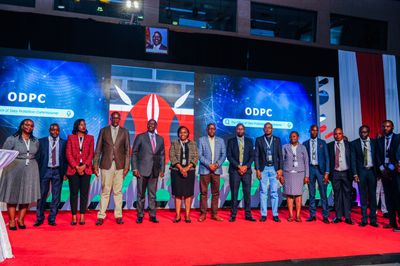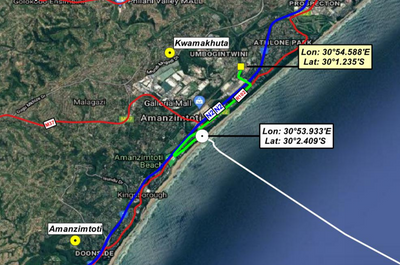By Sello Moloi
Following an announcement earlier this year that the Government of Rwanda, the UPS Foundation, and drone startup Zipline would partner on a project to use drones to deliver life-saving medical supplies, the pioneering delivery service is finally taking off.
President Paul Kagame inaugurated the national drone delivery service in Muhanga district, in southern Rwanda. The program will initially deliver supplies to deliver medical supplies to five hospitals in the country's rural south-west, with plans to expand it to nearly half of the country's 45 hospitals. The drones will be making up to 150 deliveries a day.
At the moment, it takes an average of four hours to make an emergency delivery to a hospital. With a drone, those deliveries can be completed in 15 minutes, according to Jean Philbert Nsengimana, Rwanda's minister of information and communication technology.
"In certain cases it was really bad. Roads could become impassable during the rainy season, slowing vital deliveries from the National Center for Blood Transfusion," said Jean Philbert Nsengimana, Rwanda's ICT Minister.
Drone delivery agreement with Rwanda
Zipline has entered into an agreement with the Government of Rwanda to provide all last-mile blood deliveries in the country, and the airlifts will be carried out by Zip, the company's high-speed, autonomous aircraft.
According to Zipline CEO Keller Rinaudo, the fixed-wing fliers weigh in at approximately 9 kilos and are capable of carrying several additional kilos of cargo while covering nearly 120 kilometers on a round trip with a single charge. The drones travel up to 290 kilometers an hour to reach the destination, and they communicate with the base station through an onboard SIM card. The drones are capable of staying airborne through rough weather elements like strong winds and heavy rain.
"We deploy these vehicles in modified shipping containers that we call Nests, which are set up next to existing medical warehouses in the countries we operate in," Rinaudo explained. "Each Nest contains between 10 and 15 Zips, each of which will perform between 30 and 60 deliveries per day to 22 transfusing facilities located in the Western half of Rwanda."
"Zips take off and land at the Nest, and make deliveries by descending close to the ground and airdropping the package to a designated spot at a health center which we call a mailbox," Rinaudo added further.
The Zips will be a welcome addition to the country's infrastructure. The World Health Organization (WHO) estimates that one-third of the world's population lacks access to essential medicine and nowhere is that impact felt more than in Africa, where the figure can skyrocket to as high as half the citizenry.
Zipline's fixed-wing drones
The Ziplines are fixed-wing drones, in that they resemble miniature planes, with a long wing, rather than quadcopters, the most common type of small drone, which has four propellers. Fixed-wing drones are far more efficient, allowing Zipline's drones to complete trips up to 150 kilometers. Each 14kg drone's wingspan is about 180 centimeters.
As the drone flies over a hospital, it releases a package out of its belly. The package slowly descends with a disposable parachute.
Nsengimana said that once the program is operating nationwide, the costs will be comparable to what it pays to deliver medical supplies via vehicles.
In a nation like Rwanda, where the legislation around the use of technology is such as drones are far more favorable than in other parts of the world, it's easier to launch a program like Zipline than in a place like the United States. Drones will enable the Rwandan government and private sector players to bypass the challenges of limited infrastructure while bringing essential services closer to the people.
Will the system work? There's a lot of complex engineering at the core of this project, but on the whole, it is remarkably simple. To begin with, Zipline is setting up delivery hubs adjacent to existing medical supply warehouses. Doctors in rural, hard-to-reach locations then place an order via phone or text, which is received by the Zipline center. This could be for a rare blood sample or a specific kind of medication. Next, the package is set up and attached to a Zipline drone, and a flight path is coordinated. The plane is then launched, flying autonomously toward the destination, where a waiting doctor will receive a notification and delivery time.
The steps taken by Rwanda to fast-track the use of technology in solving a complex issue deserve applause and it is an example of how technology can be applied elsewhere on the continent.






